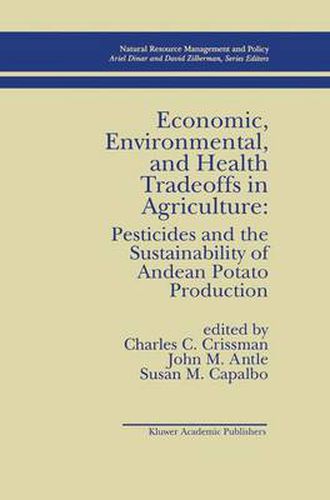Readings Newsletter
Become a Readings Member to make your shopping experience even easier.
Sign in or sign up for free!
You’re not far away from qualifying for FREE standard shipping within Australia
You’ve qualified for FREE standard shipping within Australia
The cart is loading…






This title is printed to order. This book may have been self-published. If so, we cannot guarantee the quality of the content. In the main most books will have gone through the editing process however some may not. We therefore suggest that you be aware of this before ordering this book. If in doubt check either the author or publisher’s details as we are unable to accept any returns unless they are faulty. Please contact us if you have any questions.
Today the goal of designing highly productive, sustainable agricultural produc tion systems is at the forefront of the agricultural research agenda around the world. The key to designing sustainable agricultural production technologies is in understanding their economic, environmental, and human health impacts. This volume presents a methodology designed to quantify such impacts and to represent them as tradeoff’s. We propose this tradeoff’ methodology as an approach to accomplish two essential elements in achieving agricultural sustainability. First, the tradeoff’s method is a key to the design of successful interdisciplinary research projects to assess sustainability of production systems. Second, the tradeoff’s method provides a successful means to communicate research findings to policy makers and the public. To put this effort into perspective, we would like to explain its origins and reflect on its implications for conducting future research. In 1987, the Rockefeller Foundation commissioned a report that set out to ascertain why, in view ofthe extensive literatures on certain classes of agricul tural pollution, there had been few if any attempts to incorporate pollution externalities into the rather voluminous literature on the assessment of agricultural research impacts (Antle and Capalbo, 1988; see also Antle, 1994).
$9.00 standard shipping within Australia
FREE standard shipping within Australia for orders over $100.00
Express & International shipping calculated at checkout
This title is printed to order. This book may have been self-published. If so, we cannot guarantee the quality of the content. In the main most books will have gone through the editing process however some may not. We therefore suggest that you be aware of this before ordering this book. If in doubt check either the author or publisher’s details as we are unable to accept any returns unless they are faulty. Please contact us if you have any questions.
Today the goal of designing highly productive, sustainable agricultural produc tion systems is at the forefront of the agricultural research agenda around the world. The key to designing sustainable agricultural production technologies is in understanding their economic, environmental, and human health impacts. This volume presents a methodology designed to quantify such impacts and to represent them as tradeoff’s. We propose this tradeoff’ methodology as an approach to accomplish two essential elements in achieving agricultural sustainability. First, the tradeoff’s method is a key to the design of successful interdisciplinary research projects to assess sustainability of production systems. Second, the tradeoff’s method provides a successful means to communicate research findings to policy makers and the public. To put this effort into perspective, we would like to explain its origins and reflect on its implications for conducting future research. In 1987, the Rockefeller Foundation commissioned a report that set out to ascertain why, in view ofthe extensive literatures on certain classes of agricul tural pollution, there had been few if any attempts to incorporate pollution externalities into the rather voluminous literature on the assessment of agricultural research impacts (Antle and Capalbo, 1988; see also Antle, 1994).